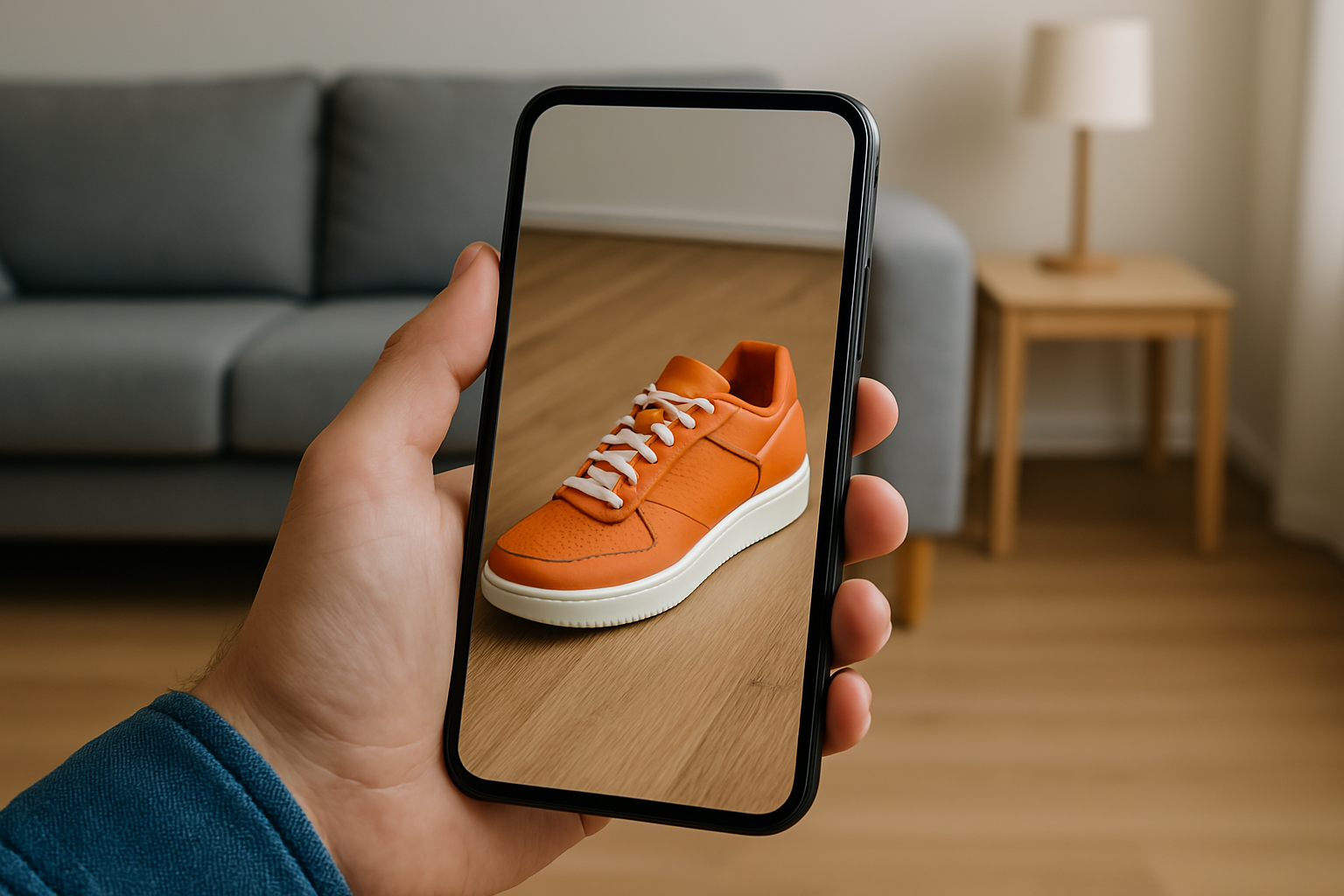These current digital times enable augmented reality (AR) marketing to revolutionize how business brands interact with their customer base. As AR technology becomes more affordable businesses develop engaging experiences that produce improved consumer connections alongside better sales rates and stronger brand dedication. Planting out AR-powered marketing becomes an essential factor for businesses striving to be distinctive in their competitive marketplace until 2025.
The Power of Augmented Reality in Marketing
AR supplies brand marketers with digital elements that overlay actual settings to improve consumer-brand encounters. Traditional marketing methods differ from AR technology because they introduce a unique interactive capability that merges the digital and physical worlds. Businesses leveraging AR can expect:
- Increased Engagement – AR experiences encourage customers to interact with products and services longer.
- Higher Conversion Rates – Interactive product demonstrations can significantly influence purchase decisions.
- Brand Differentiation – Companies using AR stand out from competitors with innovative marketing strategies.
- Enhanced Customer Satisfaction – AR provides informative and engaging content, reducing uncertainty in buying decisions.
How Businesses Can Leverage AR for Customer Engagement
1. AR-Powered Virtual Try-Ons
Virtual try-on technology represents one of the best applications of AR marketing since customers find it helpful to preview their future purchases through AR before making a purchase. Industries utilizing this technology include:
- Fashion & Apparel – Brands like Nike and Gucci offer AR-powered shoe and clothing try-ons.
- Beauty & Cosmetics – L’Oréal and Sephora allow customers to try different makeup shades virtually.
- Eyewear – Companies like Warby Parker enable users to test different frames in real-time.
When customers enjoy better product confidence through virtual try-ons they increase their purchasing decisions as they face reduced hesitations and do not return products.
2. Interactive AR Shopping Experiences
Retail companies have started utilizing AR to transform their internet-based and physical store operations. With AR applications, customers can:
- You can read product details by scanning Quick Response codes.
- Through the IKEA Place App technology customers can view virtual furniture placements in their living environment.
- Public review scores and real-time customer ratings are available through simple barcode scanner operations.
The method erases digital-physical boundaries in retail operations by delivering enhanced interactive shopping experiences.
3. AR Gamification for Brand Engagement
The implementation of AR gamification leads to better brand-customer relations because it enables rewarding and engaging content experiences. Examples include:
- McDonald’s uses Happy Meal AR Games to stimulate kids’ involvement with their brand.
- Customers interact with stories while using AR-enhanced holiday cups provided by Starbucks.
- The AR Challenges from Nike provide rewards to customers who interact with their brand products.
AR gamification delivers increased brand engagement while it activates users to share on social networks leading to organic brand expansion.
4. AR-Enhanced Product Packaging
Brands have started enhancing product containers through augmented reality functionality. Mobile phone package scanning provides users with instant access to multiple interactions like:
- Behind-the-scenes videos on product manufacturing.
- User-generated content and testimonials.
- AR-powered instructions and tutorials for product usage.
Customers experience a one-of-a-kind interaction when they view 19 Crimes wine labels because the packaging uses AR to animate historical figures.
5. Location-Based AR Marketing
Location-specific AR marketing campaigns direct experiences toward specific areas to deliver personal and appropriate content to customers. Popular use cases include:
- Customers receive AR-based promotions through retail stores’ entrance points.
- Through AR implementation in menus, restaurants can display in-depth details about foods including their complete preparation process.
- The tourism sector utilizes AR to present interactive historical stories along with guides for tours through their facilities.
The location-based solution Live View AR Navigation on Google Maps stands as a top illustration of AR technology improving user experiences.
6. AR in Social Media Marketing
Social media applications including Instagram, Snapchat, and TikTok now provide AR filters that stimulate brand participation from users. Marketers can leverage these tools by:
- The development of customized AR filters makes users able to both interact with them and redistribute these customized filters across their networks.
- Branded AR challenges need to be launched to maximize viral spread.
- Companies use AR-powered lenses to allow virtual access to their products.
AR-based marketing strategies implemented by Pepsi and Adidas managed to enhance brand recognition which simultaneously led to increased interaction rates.
Best Practices for Implementing AR in Marketing
Businesses need to follow these steps to obtain the most out of their AR marketing initiatives:
- Develop AR technologies that produce fluid solutions that users can navigate effortlessly from any platform.
- AR marketing initiatives should not exist independently but should work as supporting elements which reinforce brand purpose.
- AR storytelling requires businesses to produce immersive narratives for consumer emotional connections.
- Ensure mobile optimization for all AR interactions since smartphones dominate the AR market.
- Users should find easy methods to share AR content because it improves both reach and interaction potential.
The Future of AR in Customer Engagement
As AR technology advances, businesses can expect:
- AI-Integrated AR Experiences – Combining AR with artificial intelligence for hyper-personalized interactions.
- 5G-Powered AR – Faster connectivity will enable real-time AR experiences with higher-quality visuals.
- Web-Based AR (WebAR) – Eliminating the need for app downloads, making AR more accessible.
- Augmented Reality Shopping Assistants – AI-driven AR chatbots providing personalized shopping recommendations.
With these developments, AR marketing will continue to evolve, offering businesses new ways to connect with consumers.
Conclusion
Augmented reality technology transforms customer engagement through its power to deliver individualized intense virtual experiences that interact directly with users. The use of AR technology enables virtual try-ons and brand interaction games which improves consumer confidence and leads to higher conversion rates and brand loyalty. Future business success belongs to organizations that adopt AR marketing methods because they achieve superior brand connection with their customer base.





